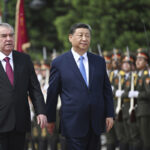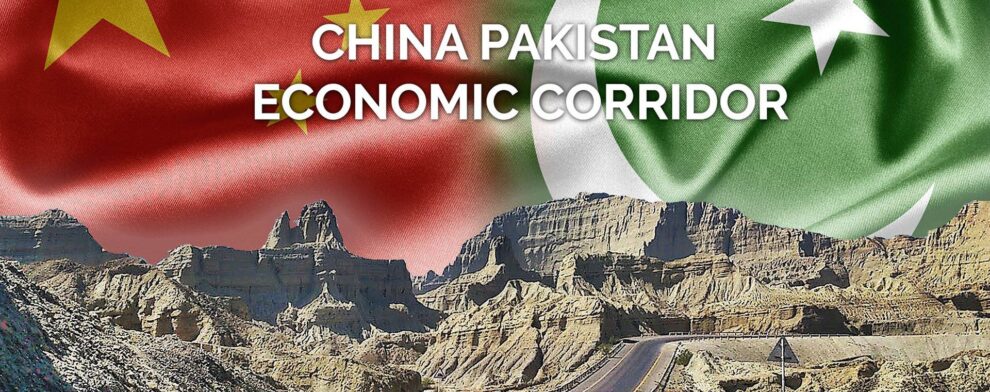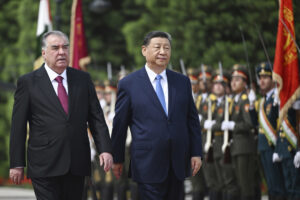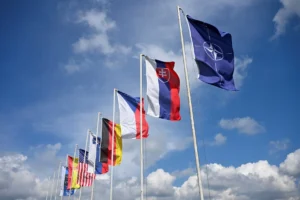Not once but on many occasions, India and the US have openly discredited China’s Belt and Road Initiative (BRI) with a particular reference to the China-Pakistan Economic Corridor (CPEC). For the US, it is the so-called mines of debt trap that China has laid to snarl the economically weaker Asian states, which is bothersome. To India, an economic network of this magnitude is a source to shift the balance of power completely in favour of China, paling in the process the hegemonic ambitions of India. Another issue not sitting well with India is the CPEC’s potential to increase Pakistan’s economic worth and development possibilities. Since the project has been floated, we have seen an unusual rise in the attacks on Chinese Workforce by Baloch Liberation Army (BLA). Credible evidence has been provided to the international community, particularly the Chinese government, about the support of India to the BLA. In corollary, Pakistan and the CPEC project are, on the one hand, in the crosshair of the US-China rivalry and, on the other, India’s hegemonic designs in the regions.
In 2013, Chinese President Xi Jinping and the then Pakistani Prime Minister Nawaz Sharif unveiled the $46 billion CPEC, the flagship project of BRI. The project plan included building of new and vast transportation and power projects across the country that, while solving Pakistan’s energy crisis, shall put it on the road to an improved economic environment. In a few years, CPEC’s worth went as high as $6 billion with the finance of many other high-profile projects. At the heart of CPEC is the Gwadar Port, located on the Arabian Sea at the mouth of the Strait of Hormuz, which would reduce logistics costs and time for Chinese goods to reach the Middle East and Africa.
In a decade since CPEC was floated, the Gwadar Port has become fully functional and is prepared to become a regional hub of connectivity benefiting Afghanistan and Central Asian countries. Over the past 14 months, the cargo handling at Gwadar Port has increased manifold, reaching the capacity of hosting 50-tonne ships. More than 30 enterprises related to overseas warehouses, fishery products, edible oil processing, furniture manufacturing, electric vehicle assembly, trade and logistics are functioning in the Free Zones of the Gwadar Port.
One of the most significant threats facing CPEC right from the day it started is the onslaught of fake news and disinformation. Pakistan and China jointly took up this issue during the 7th CPEC Media Forum in Islamabad. Some fake news and propaganda spread against CPEC are: Pakistan falling into China’s debt trap; absence of transparency in the projects, and environmental impacts, especially from the coal-based power projects. The Chinese chargé d’affaires Pang Chunxue, while speaking about the seriousness of the challenge, said: “False propaganda and disinformation on CPEC are on the rise. Hostile forces are trying to undermine the development of CPEC, as well as the unity and mutual trust between the two countries.” Going further, she explicitly mentioned Quad, which is a group of the US, Australia, India and Japan; Aukus, which is a trilateral security pact between Australia, the UK and the US; and the Indo-Pacific Economic Framework as the means to contain China and to undermine its presence in the region. She struck the right chord, saying that the policy of encirclement emanating from the Cold War mentality is not conducive to the progress of CPEC.
The antidote to this mentality and strategy is speaking the truth about the BRI and CPEC. The truth is that CPEC is not only about connectivity and cooperation, it is also about building bridges and lifting people out of poverty. According to the Chinese Embassy calculations, by the end of 2022, CPEC has brought $25.4 billion in direct investment to Pakistan, created about 236,000 jobs in the country, helped Pakistan generate 8,000 megawatts of electricity, added 886km to the national core transmission grid and expanded highways by 510km.
Investment in human development is another essential facet of CPEC that failed to receive the attention it deserved because of the commotion surrounding disinformation. In 2019, China gave $1 billion to Pakistan for 27 projects in education, agriculture and poverty alleviation. Most of these programmes are concentrated in Southern Punjab and Balochistan. In 2019, Gwadar Technical and Vocational Institute was established in Gwadar to provide skill-based training on port handling and other areas. Almost 2,000 people are trained annually by the institution. The World Bank assessment suggests that CPEC has the potential to lift 1.1 million low-income Pakistanis out of poverty. Yang Yundong, China’s Consul General for Pakistan, during a press conference held in late August this year in Karachi, said that the 36 projects initiated under CPEC, some of which are completed while others are on their way to completion, have generated a total income of $17.55 billion, along with $2.12 billion in tax payments to Pakistan.
These developmental projects and investments can be increased to a new high if Pakistan creates the muscle to disarm the disinformation and propaganda machine of the CPEC detractors. It is not difficult if all stakeholders converge on the singular objective of seeing Pakistan rise with a strong bond of trust in one another and not allowing political differences to affect the economic policies and decision-making.
Source : Tribune















